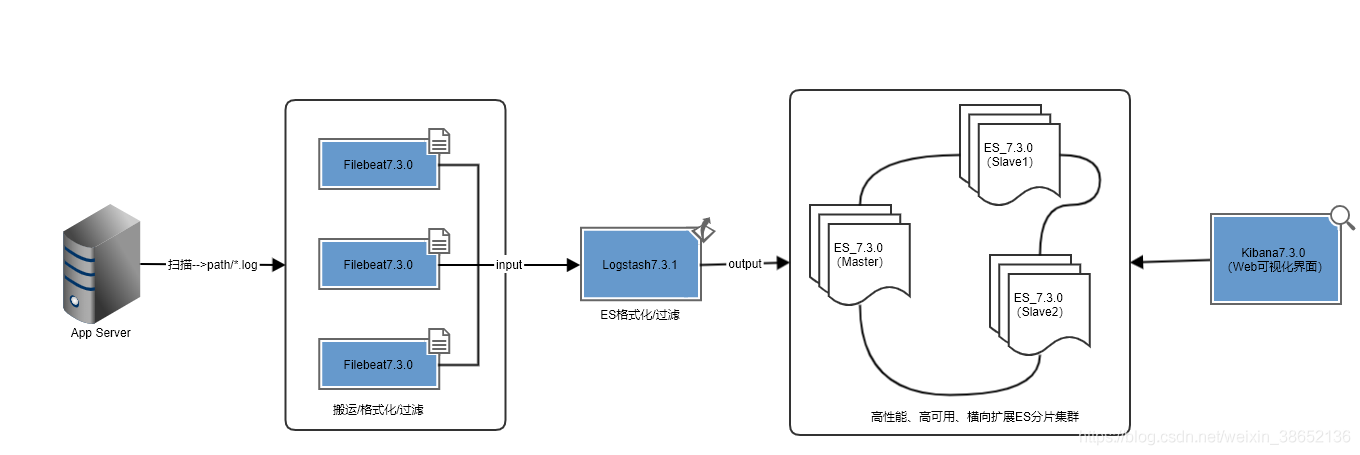Java常用字节流和字符流实例汇总
IO流(输入流、输出流)
字节流、字符流
1.字节流:
InputStream、OutputStream InputStream抽象了应用程序读取数据的方式; OutputStream抽象了应用程序写出数据的方式;2.EOF=End 读到-1就读到结尾
3.输入流的基本方法:
int b=in.read();读取一个字节无符号填充到int低八位;-1是EOF; in.read(byte[] buf) in.read(byte[] buf,int start,int size)4.输出流基本方法:
out.write(int b) 写出一个byte到流,b的低8位; out.write(byte[] buf) 将buf字节数组都写入到流; out.write(byte[] buf,int start,int size)5.FileInputStream--->具体实现了在文件上读取数据,下面请看最简单的文件读取:
package com.wxd.test2;import java.io.FileInputStream;import java.io.IOException;public class IOUtil { /** * 读取指定文件内容,按照16进制输出到控制台 * 并且每输出10个byte换行 * @param fileName */ public static void printHex(String fileName) throws IOException { //把文件作为字节流进行读操作 FileInputStream in =new FileInputStream(fileName); int b; int i=1; while ((b=in.read())!=-1){ if(b<=0xf){//单位数前面补0System.out.print(0); } System.out.print(Integer.toHexString(b)+' '); if(i++%10==0){System.out.println(); } } in.close(); }}
6.FileOutputStream实现了向文件中写出byte数据的方法:
package com.wxd.test2;import java.io.FileOutputStream;import java.io.IOException;public class FileOutDemo1 { public static void main(String[] args) throws IOException{ //如果该文件不存在则直接创建,如果存在删除后创建 FileOutputStream out=new FileOutputStream('demo/out.dat'); out.write(’A’);//写出了‘A’字符的低八位 out.write(’B’);//写出了‘B’字符的低八位 int a=10;//write只能写低八位写一个int需要写四次每次8位 out.write(a>>>24); out.write(a>>>16); out.write(a>>>8); out.write(a); byte[] zg='中国'.getBytes('UTF-8'); out.write(zg); out.close(); IOUtil.printHex('demo/out.dat'); }}
7.DataOutputStream/DataInputStream对“流”功能的扩展,可以更加方便的读取int,long,字符等类型数据:
writeInt()/writeDouble()/writeUTF()
package com.wxd.test2;import java.io.DataOutputStream;import java.io.FileOutputStream;import java.io.IOException;public class DosDemo { public static void main(String[] args) throws IOException { String file='demo/dos.dat'; DataOutputStream dos=new DataOutputStream(new FileOutputStream(file)); dos.writeInt(10); dos.writeInt(-10); dos.writeLong(10l); dos.writeDouble(10.5); //采用UTF-8编码写出 dos.writeUTF('中国'); //采用utf-16be编码写出 dos.writeChars('中国'); dos.close(); }}
package com.wxd.test2;import java.io.DataInputStream;import java.io.FileInputStream;import java.io.IOException;public class DisDemo { public static void main(String[] args) throws IOException { String file='demo/dos.dat'; DataInputStream dis=new DataInputStream(new FileInputStream(file)); int i=dis.readInt();//其实做了4次read,因为int是32位 System.out.println(i); i=dis.readInt(); System.out.println(i); long l=dis.readLong();//其实做了8次read,应为long是64位 System.out.println(l); double d=dis.readDouble(); System.out.println(d); String s=dis.readUTF(); System.out.println(s); dis.close(); }}
8.BufferedInputStream&BufferedOutputStrean这两个流为IO提供了带缓冲区的操作,一般打开文件进行写入或读取操作时,都会加上缓冲,这种流模式提高了IO性能
从应用程序中把数据放入文件,相当于将一缸水倒入到另一个缸中:
FileOutputStream--->write()方法相当于一滴一滴地把水转移过去 DataOutputStream--->writeXxx()方法会方便一些,相当于一瓢一瓢的把水转移过去 BufferedOutputStream--->write()方法相当于一瓢一瓢先放入桶中,再从桶中倒入缸中/*** *进行文件的拷贝,利用带缓冲的字节流 * @param srcFile * @param destFile * @throws IOException */ public static void copyFileByBuffer(File srcFile,File destFile) throws IOException{ if(!srcFile.exists()){ throw new IllegalArgumentException('文件:'+srcFile+'不存在'); } if(!srcFile.isFile()){ throw new IllegalArgumentException(srcFile+'不是文件!'); } BufferedInputStream bis=new BufferedInputStream(new FileInputStream(srcFile)); BufferedOutputStream bos=new BufferedOutputStream(new FileOutputStream(destFile)); int c; while ((c=bis.read())!=-1){ bos.write(c); bos.flush();//刷新缓冲区,否则写入不到; } bis.close(); bos.close(); }
字符流
1.编码问题
2.认识文本和文本文件
3.Java的文本(char)是16位无符号的整数,是字符的unicode编码(双字节编码)文件是byte byte byte...的数据序列
文本文件是文本(char)序列按照某种编码方案(utf-8,utf-16be,gbk)序列化为byte的存储
4.字符流(Reader Writer):--->操作的是文本文件
字符的处理,一次处理一个字符
字符的底层任然是基本的字节序列
字符流的基本实现
InputStreamReader 完成byte流解析为char流,按照编码解析
OutputStreamWriter 提供char流到byte流,按照编码处理
package com.wxd.test2;import java.io.*;public class IsrAndOswDemo { public static void main(String[] args) throws IOException{ //InputStreamReader被称为桥梁流 FileInputStream in=new FileInputStream('demotest.txt');//默认项目的编码,操作的时候要写文件本身的编码 InputStreamReader isr=new InputStreamReader(in,'utf-8'); FileOutputStream out=new FileOutputStream('demotest2.txt'); OutputStreamWriter osw=new OutputStreamWriter(out,'utf-8');// int c;// while ((c=isr.read())!=-1){// System.out.print((char)c);// } char[] buffer=new char[8*1024]; int c; //批量读取,放入buffer这个字符数组,从第0个位置开始放置,最多放buffe.length个 //返回的是读到的字符的个数 while ((c=isr.read(buffer,0,buffer.length))!=-1){ String s=new String(buffer,0,c); System.out.println(s); osw.write(buffer,0,c); osw.flush(); } isr.close(); osw.close(); }}
5.FileReader/FileWriter(这种方式bu)
package com.wxd.test2;import java.io.FileReader;import java.io.FileWriter;import java.io.IOException;public class FrAndFwDemo { public static void main(String[] args) throws IOException{ FileReader fr=new FileReader('demotest.txt'); FileWriter fw=new FileWriter('demotext2.txt',true);//设置为true在后面追加 char[] buffer=new char[2056]; int c; while ((c=fr.read(buffer,0,buffer.length))!=-1){ fw.write(buffer,0,c); fw.flush(); } fr.close(); fw.close(); }}
6.字符流的过滤器
BufferedReader ----->readLine一次读一行
BufferedWriter/PrintWriter ---->写一行
package com.wxd.test2;import java.io.*;public class BrAndBwOrPwDemo { public static void main(String[] args) throws IOException { //对文件进行读写操作 BufferedReader br = new BufferedReader(new InputStreamReader(new FileInputStream('demotest.txt'))); /*BufferedWriter bw=new BufferedWriter(new OutputStreamWriter(new FileOutputStream('demotest3.txt')));*/ PrintWriter pw = new PrintWriter('demotest3.txt'); String line; while ((line = br.readLine()) != null) { System.out.println(line);//一次读一行,并不能识别换行 /*bw.write(line); //单独写出换行操作 bw.newLine(); bw.flush();*/ pw.println(line); pw.flush(); } br.close();// bw.close(); pw.close(); }}
以上就是本文的全部内容,希望对大家的学习有所帮助,也希望大家多多支持好吧啦网。
相关文章:

 网公网安备
网公网安备